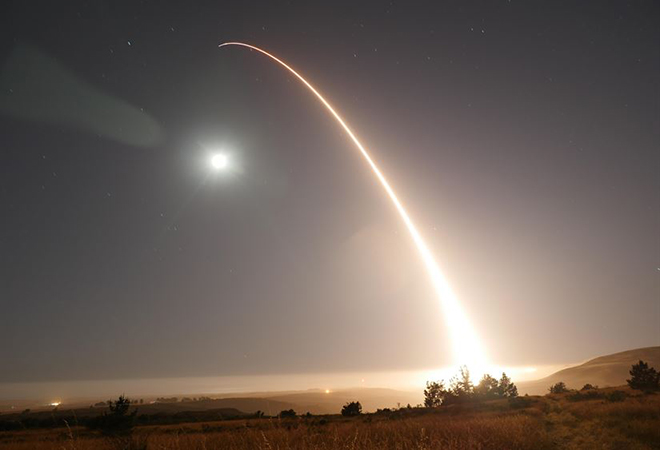
Beneath the ever-shifting waves of global diplomacy, Sri Lanka emerges as the stage for a compelling narrative for the strategic expansion of China and the island nation’s cultural kinship with India, especially in sustainable development and renewable energy projects. Sinopec's pioneering endeavour to construct its inaugural wholly-owned refinery on foreign soil is not merely an extension of China's energy reach, but is a nuanced overture in what is traditionally considered as India’s sphere of influence.
Yet, in the heart of this geopolitical dance lies India's enduring ethos of nurturing regional harmony and growth through synergistic, community-focused efforts. The juxtaposition of China's assertive stride into the energy domain against India's altruistic energy diplomacy paints a vivid tableau of two nations charting their distinct trajectories in Sri Lanka.
The juxtaposition of China's assertive stride into the energy domain against India's altruistic energy diplomacy paints a vivid tableau of two nations charting their distinct trajectories in Sri Lanka.
India’s approach to energy diplomacy in Sri Lanka is a testament to its long-standing policy of fostering regional stability and development through collaborative, people-centric initiatives. Unlike the often competitive and strategic nature of international energy politics, India’s involvement in Sri Lanka’s energy sector is deeply rooted in a commitment to the island nation’s economic resurgence. Under their four-pronged strategy, especially after its recent economic crisis, the energy security package encompasses a credit line to facilitate fuel imports from India, along with an expedited modernisation process for the Trincomalee Tank Farm.
Cultivating green harmony
Through initiatives such as the Hybrid Renewable Energy Systems in Delft, Nainativu, and Analaitivu islands, India and Sri Lanka have forged a robust partnership aimed at bolstering Sri Lanka's energy independence. Spearheaded by India with a US$ 11 million grant, these projects not only underscore India's support without imposing financial burdens, but is also indicative of its broader vision of regional cooperation. Notably, the contract for constructing the power plants was awarded to Indian firm U Solar Clean Energy Solutions through a competitive bidding process exclusive to Indian suppliers, ensuring mutual benefit and expertise exchange. The combined output of the three facilities will be 2,230 kilowatts of clean energy. Sri Lanka, following President Ranil Wickremesinghe's recent visit to New Delhi, opted for India over China in issuing tenders for these power projects in the vicinity of Jaffna. This strategic decision marks a significant shift in the region's geopolitical dynamics.
Facilitating this partnership is a Joint Working Group (JWG), established to foster further dialogue and knowledge exchange. India's expertise in renewable energy has been instrumental in supporting capacity-building efforts in Sri Lanka, aligning with broader economic partnership goals. At a recent JWG meeting, India showcased its renewable energy achievements and citizen-centric programmes, while Sri Lanka outlined its ambitious target of achieving 70 percent renewable energy by 2030. This convergence of interests presents fertile ground for Indian investment in Sri Lanka's renewable energy landscape.
India's expertise in renewable energy has been instrumental in supporting capacity-building efforts in Sri Lanka, aligning with broader economic partnership goals.
Moreover, the plea for capacity building and training from India to Sri Lanka resonates with the spirit of mutual growth, emblematic of India's approach in the region. As both nations harmonise their efforts in the renewable energy sector, they not only strengthen bilateral ties but also contribute to the broader objective of sustainable development and energy security in the region.
Strategic expansion vs sustainable support
While India continues to extend its support to Sri Lanka, it is also mindful of the balance of power in the region, especially concerning China’s rising energy investments. The recent approval of Sinopec’s oil refinery project in Sri Lanka is a significant development, marking China’s largest-ever foreign investment in the country, pegged at US$ 4.5 billion.
However, India’s response has not been one of direct competition but rather a cautious approach that seeks to ensure its energy projects complement the island’s economic progress and meet the rising energy demand, as emphasised in the India-Sri Lanka Economic Partnership Vision. Energy cooperation stands as a cornerstone of the bilateral partnership, with both nations identifying a suite of pivotal projects that will capitalise on their close proximity to each other. These include green energy initiatives, the establishment of bidirectional electricity trade, the development of a multi-product pipeline, and the exploration of offshore upstream projects. Such collaborative efforts underscore the commitment to a sustainable and mutually beneficial energy future rather than a competitive stance.
Sinopec’s venture into Sri Lanka, particularly with the planned refinery at Hambantota port, is indicative of China’s global strategy to expand its energy footprint. Sinopec is weighing the options between constructing a single 160,000 barrel-per-day (bpd) facility or two phased 100,000-bpd plants. Both configurations are aimed at producing gasoline and diesel fuel.
Energy cooperation stands as a cornerstone of the bilateral partnership, with both nations identifying a suite of pivotal projects that will capitalise on their close proximity to each other.
On 14 July 2023, Sinopec Energy Lanka (Pvt) Ltd and the Board of Investment of Sri Lanka (BOI) inked a deal to manage and set up fuel stations across Sri Lanka. With a US$ 100 million investment, Sinopec will handle fuel import, storage, and sales. The project includes taking over 150 privately-owned fuel outlets currently under Petroleum Corporation's management and establishing 50 new stations.
Operating under the Sri Lanka Board of Investment Act No. 17, the agreement spans 20 years and is supervised by Sinopec Energy Lanka. This act allows the BOI to offer incentives and concessions to investors, which can include tax holidays, duty exemptions, and other benefits to promote economic development and growth in Sri Lanka.
While this move has raised concerns about the strategic implications for India, New Delhi has chosen to focus on strengthening its own ties with Sri Lanka through connectivity and pipeline projects. The India-Sri Lanka multi-product pipeline project aims to enhance energy connectivity between the two South Asian nations. The proposed pipeline will connect Nagapattnam, India, to the Trincomalee Tank Farm and Colombo in Sri Lanka. It is designed to transport multiple petroleum products, including gasoline and diesel fuel, between the two countries. In this regard, feasibility studies are planned, including technical assessments, demand analysis, financial evaluations, and business model reviews.
India's collaboration in the construction of a multi-product petroleum pipeline from its southern region to Sri Lanka is a strategic initiative to bolster its energy security. This strategy is not about countering China’s influence but about offering an alternative model of development that prioritises the well-being of the Sri Lankan people.
India's burgeoning energy role in Sri Lanka
Notably, Lanka IOC, a subsidiary of the Indian Oil Corporation (IOC), has firmly established India's energy presence in Sri Lanka, with 211 retail outlets and a substantial stake in the development of the Trincomalee oil tank farm.
The India-Sri Lanka multi-product pipeline project aims to enhance energy connectivity between the two South Asian nations.
Nestled within one of the world's most exquisite natural harbours, Trincomalee stands as a potential naval stronghold in the northeast Indian Ocean. Initially erected in the 1930s to serve the British fleet, the tank farm comprises approximately 100 expansive oil tanks. India has recognised Trincomalee's strategic significance for regional dominance. A 50-year lease for 14 tanks was secured by IOC, while a newly formed company that is jointly owned by IOC (49 percent) and Sri Lanka's Ceylon Petroleum acquired an additional 61 tanks. India's active involvement underscores its strategic foresight in the region.
In a significant stride towards enhancing regional energy connectivity and cooperation, the Sri Lankan government announced a visionary proposal in March 2024. This ambitious initiative entails the construction of a US$ 1.2 billion bi-directional undersea electricity cable to connect Sri Lanka’s Anuradhapura town with Chennai via a 130 km overland transmission line in India, followed by an undersea cable emerging at Thiruketheeswaram in Mannar, Sri Lanka.
Geopolitical and geoeconomic gains
While both the countries are working together to strengthen Sri Lanka’s fuel supplies and tap offshore upstream hydrocarbons, India’s strategic engagement in Sri Lanka’s renewable energy landscape is a testament to its commitment to fostering a sustainable future, aligning with Sri Lanka’s ambitious goal of achieving 70 percent renewable energy by 2030.
India not only bolsters its influence and cements robust bilateral ties but also drives the South Asian region towards a greener, more integrated economy.
This collaboration extends beyond individual projects, embracing global initiatives such as the Global Biofuel Alliance and the International Solar Alliance (ISA), for instance. These alliances are more than mere partnerships; they represent India’s geopolitical foresight and geo-economic acumen. By leading these alliances, India not only bolsters its influence and cements robust bilateral ties but also drives the South Asian region towards a greener, more integrated economy. The synergy between the two nations in advancing bio-fuel adoption and contributing to the ISA’s objectives is a strategic move that reduces reliance on fossil fuels and underscores India’s role as a key player in the region’s energy transition.
In a dynamic narrative of strategic manoeuvring and sustainable collaboration, while China's assertive strides mark significant investments, India's approach emphasises nurturing regional stability and growth through community-focused efforts, which has both geopolitical and geo-economic implications not just for the countries in question but for the entire South Asian region at large.
Manish Vaid is a Junior Fellow at the Observer Research Foundation
The views expressed above belong to the author(s). ORF research and analyses now available on Telegram! Click here to access our curated content — blogs, longforms and interviews.




 PREV
PREV


